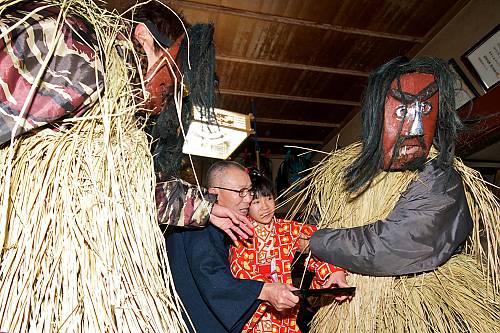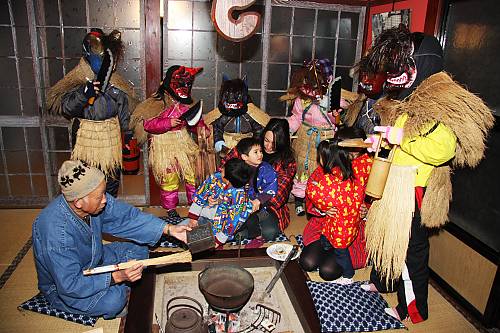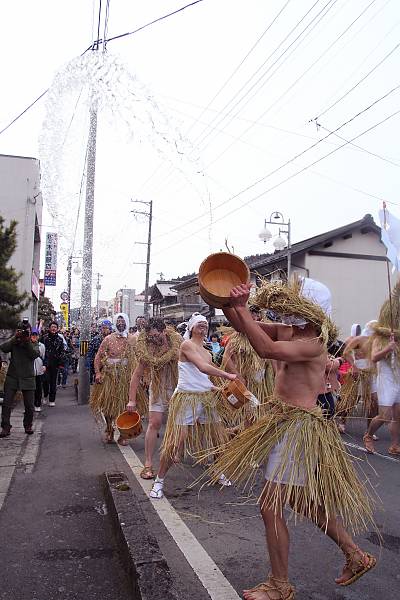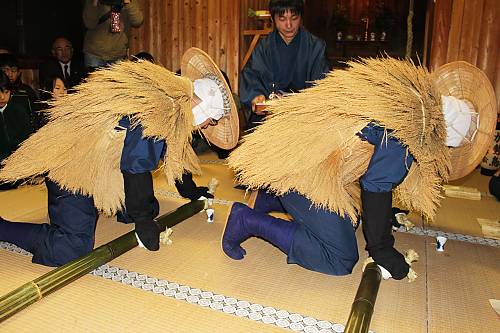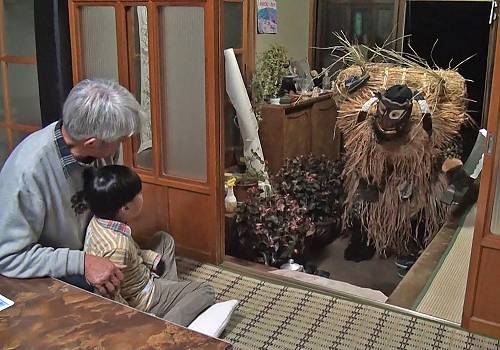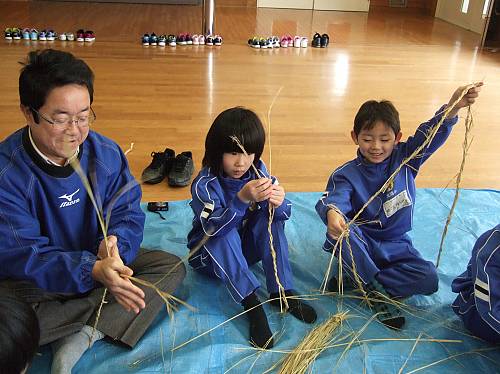Raiho-shin, ritual visits of deities in masks and costumes
Inscribed in 2018 (13.COM) on the Representative List of the Intangible Cultural Heritage of Humanity
Raiho-shin rituals take place annually in various regions of Japan – especially in the Tohoku, Hokuriku, Kyushu and Okinawa regions – on days that mark the beginning of the year or when the seasons change. Such rituals stem from folk beliefs that deities from the outer world – the Raiho-shin – visit communities and usher in the new year or new season with happiness and good luck. During the rituals, local people dressed as deities in outlandish costumes and frightening masks visit houses, admonishing laziness and teaching children good behaviour. The head of the household treats the deities to a special meal to conclude the visit, and in some communities the rituals take place in the streets. In some communities, men of a certain age become the Raiho-shin, while in others women play such roles. Because the rituals have developed in regions with different social and historical contexts, they take diverse forms, reflecting different regional characteristics. By performing the rituals, local people – notably children – have their identities moulded, develop a sense of affiliation to their community, and strengthen ties among themselves. In accordance with their ancestors’ teachings, community members share responsibilities and cooperate in preparing and performing the rituals, acting as the practitioners responsible for transmitting the related knowledge.


